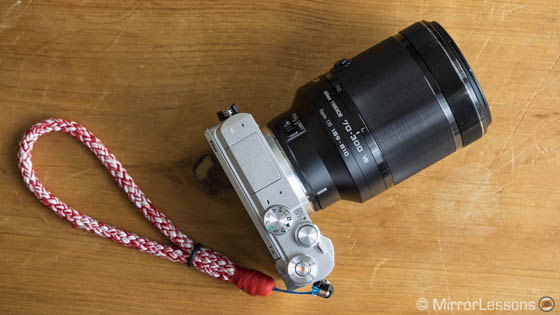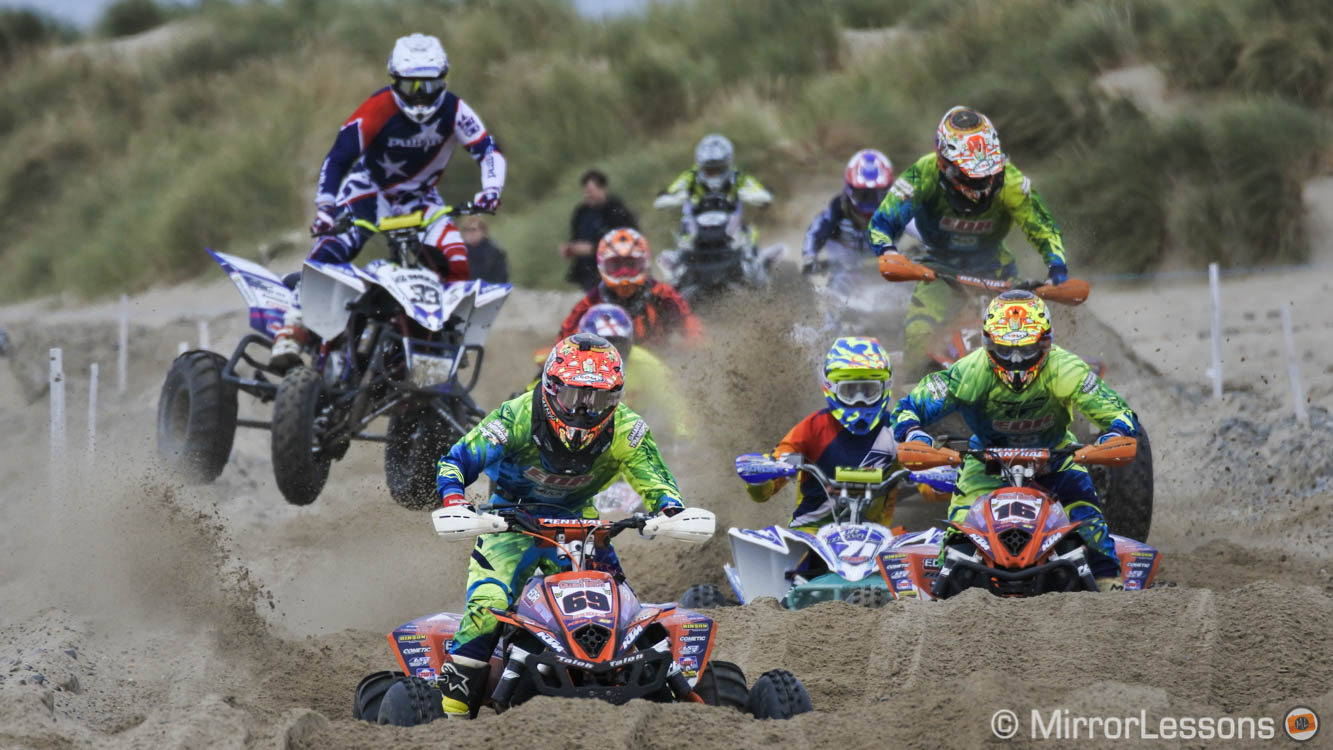Update: you can also check out our Nikon J5 full review!
Since its announcement in March 2014, I’ve been very curious to try the 1 Nikkor 70-300mm f/4.5-5.6 with a Nikon 1 camera. The 1 system has always had one of the fastest autofocus systems among mirrorless cameras and with that lens mounted, you get a 189-810mm (full-frame equivalent) in a very small and lightweight package (less than 800g).

The chance to try the telephoto zoom finally presented itself while I was testing the Nikon 1 J5, the latest addition to the 1 series. I used it primarily at the Motocross Weekend that took place in the Welsh town of Barmouth. The event was organised by Wilden MXC and was set on the large beach that encircles the town. Participants of all ages and experience levels took part in the motocross and quad racing.
Truth be told, the J5 is not the most comfortable camera to operate with this lens because of its limited grip, small size and lack of a viewfinder. The Nikon 1 V3 with the optional landscape grip and external EVF is by far the best set-up but it is more expensive.
I would also recommend using the 1 Nikkor 70-300mm with its tripod collar (TR-N100) given the extreme focal lengths. It will make the combo more balanced on a tripod or monopod. Unfortunately, the tripod mount for this lens is sold separately so I had to mount my monopod plate underneath the camera itself. This made the combo front heavy but it was still better than nothing.

I set the lens to its fastest aperture, which is between 4.5 and 5.6 depending on the focal length. I worked mainly between 1/800s and 1/1000s shutter speed to freeze the action and the dirt flying in the air, and I set the sensitivity to Auto with ISO 800 as my limit. As for the autofocus, I worked in Continuous mode with the single point, and switched to Multi area when I had to pan and follow the bikers on a diagonal, which worked really well.
I have to say that the autofocus performance of this camera is stunning. The sensor includes 171 focus areas of which 105 are phase detection points. The number of slightly blurry shots I ended up with was very low (10%) and I only had a few out of focus shots out of the 600ish images I brought back home.







Some dirt in the foreground didn’t alter the AF performance here.
I often used the standard continuous shooting mode that lets you shoot for a longer period of time at 5fps. If you choose a higher speed like 10 or 20fps, the camera will record a maximum of 20 shots. Past 20fps and up to 60fps (the fastest speed), the camera will lock focus on the first frame. I only own one cheap 8GB micro SD card so I made sure to shoot JPG only. I have to say that the buffer capabilities of the J5 are really good considering the 20MP resolution. I was only slowed down by the writing speed, which was due to the limitations of my memory card.
All things considered, I haven’t tried another mirrorless camera capable of this level of autofocus performance.
We’re talking about top level DSLR autofocus speed and the burst capabilities are even better. Actually, professional photographer Rick Maiman uses the V3 and 70-300mm to cover the US Open Tennis tournament. You can read about it in our mirrorless sports photography article.





The Nikon 1 70-300mm is a wonderful lens. The only weak point I noticed is a lack of sharpness at 300mm for distant subjects. As you can see below, the image of the start of the race looks slightly soft. Otherwise, the sharpness and AF motor are excellent. It is definitely a good alternative set-up for action and wildlife if you want something really small and portable. (To see a Nikon 1 photographer who shoots a lot of wildlife, check out the work of Thomas Stirr.) Of course you have to accept the idea of using a smaller sensor. The camera features a CX type sensor (1-inch) which is the reason this kind of performance is possible and also why the gear is so portable despite the equivalent zoom range.

The 1 series was the first mirrorless system to include high frame rate capabilities for recording slow motion videos. However the resolution was below standard definition. The Nikon 1 J5 has been improved and can shoot 120fps in HD ready (720p) but is limited to 3 seconds of recording time for each clip which results in an effective length of 12s at 30fps. Unfortunately this cannot be considered stunning anymore because more cameras are now integrating Full HD/120fps capabilities (without a short recording limitation) and the recent Sony RX100 IV and RX10 II have far superior slow-motion features.
But since the J5/70-300mm combo was a unique configuration and the motocross race was the perfect subject for slow motion, I couldn’t resist compiling the video below!
What are your thoughts about the Nikon 1 system? Have these images changed your perception?
Update: you can also check out our Nikon J5 full review!
